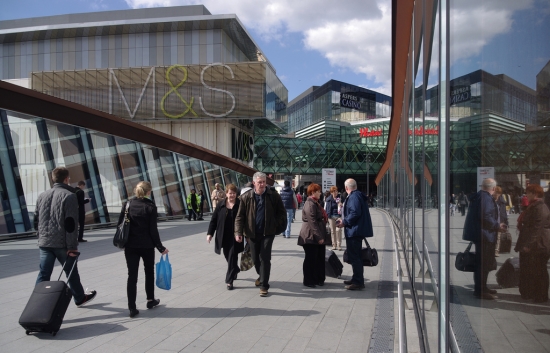Marks & Spencer (M&S) was once the pinnacle of British retailing, known for providing value for money and forward-thinking style in its popular clothing line. However, in recent years the chain has seemed unable to click with customers in the way it once did, with critics claiming it has “lost direction” in the fashion stakes.

Recent sales certainly seem to indicate a certain element of consumer disenchantment with the clothing line, with only a boost in food sales standing between the retailer and the need to post losses.
Like for like sales on the food side of the business rose by 1.8 per cent, which just managed to offset a drop in general merchandise sales – a category which encompasses clothing, footwear and homeware – of 1.6 per cent in total.
Overall, the success of the food sales allowed M&S to post an underlying UK sales rise of 0.3 per cent for the last quarter.
Unfortunately, though, these results also mark the eighth consecutive quarter in which general merchandise has failed to post positive results. Despite chief executive Marc Bolland deciding to revamp the clothing line and bringing in ex-Debenhams and Jaeger chief executive Belinda Earl as head of style, the new lines have, as yet, failed to make waves on the high street.
Retail analyst at Kantar Retail, Bryan Roberts, believes that the success or otherwise of the autumn and winter collection will determine the future of the business. The line will be released later this month and has so far received positive reactions in the fashion press.
He says; “Clothing is the bedrock of the business, particularly women’s wear – without it, the business will struggle.
“It’s one thing to impress fashion journalists and City types, but another thing to impress young families and grandparents, the broader audience that M&S is trying to appeal to.
“If it comes to Christmas and clothing still hasn’t recovered, the knives might come out for Mr Bolland.”
However, not all industry experts are convinced that the clothing lines themselves are at the root of consumer apathy towards M&S, as many believe the layout of the retailer’s stores seem unattractive to the new generation of shoppers.
This argument could certainly hold water – while total group sales did manage to climb 3.3 per cent in the 13 weeks to the 29th June, a rise of almost 30 per cent in online sales played an instrumental role in this, indicating the digital marketplace has become more attractive than the physical one.
Neil Saunders of Conlumio believes that a store revamp would be the best way to showcase the autumn/winter collection to its full effect.
He says; “The big issue for M&S is, within the store environment, collections lose their creative integrity and become consumed by a sea of merchandise.
“This is exacerbated by a lacklustre shop fit and point-of-sale material, which is positively off-putting for many younger and young at heart consumers who may otherwise be interested in the items on offer.”
Do you think a re-design of Marks & Spencer’s commercial property interiors would assist in showcasing new clothing lines to consumers loyal to the brand, or is the problem within the general merchandise stock itself?
Previous Post
Lloyds Building Sold to Chinese Insurance Firm